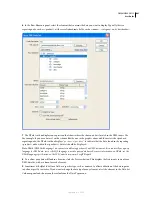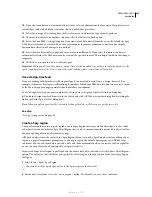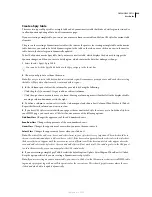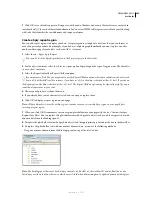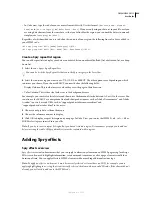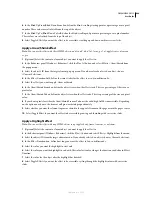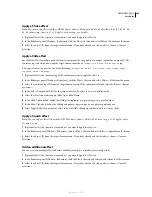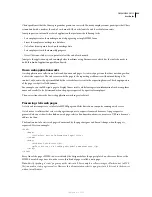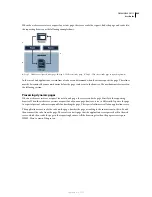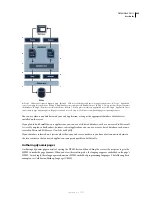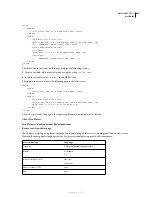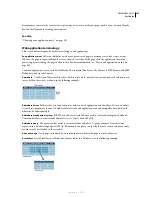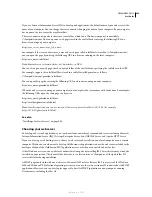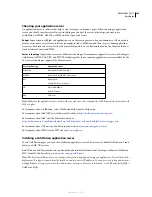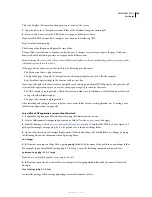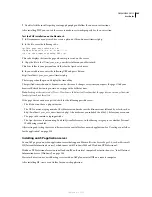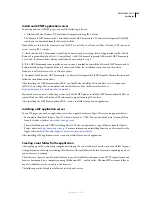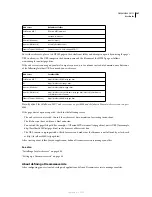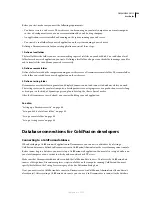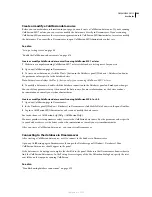
DREAMWEAVER CS3
User Guide
494
A.
Step 1 - Web browser requests dynamic page.
B.
Step 2 - Web server finds page and passes it to application server.
C.
Step 3- Application
server scans page for instructions and finishes page.
D.
Step 4- Application server passes finished page back to web server
E.
Step 5 - Web
server sends finished page to requesting browser
Accessing a database
An application server lets you work with server-side resources such as databases. For example, a dynamic page may
instruct the application server to extract data from a database and insert it into the page’s HTML. For more infor-
mation, see
www.adobe.com/go/learn_dw_dbguide
.
The instruction to extract data from a database is called a
database query
. A query consists of search criteria
expressed in a database language called SQL (Structured Query Language). The SQL query is written into the page’s
server-side scripts or tags.
An application server cannot communicate directly with a database because the database’s proprietary format
renders the data undecipherable in much the same way that a Microsoft Word document opened in Notepad or
BBEdit may be undecipherable. The application server can communicate with the database only through the inter-
mediary of a database driver: software that acts like an interpreter between the application server and the database.
After the driver establishes communication, the query is executed against the database and a recordset is created. A
recordset
is a set of data extracted from one or more tables in a database. The recordset is returned to the application
server, which uses the data to complete the page.
Here’s a simple database query written in SQL:
SELECT lastname, firstname, fitpoints
FROM employees
This statement creates a three-column recordset and fills it with rows containing the last name, first name, and fitness
points of all employees in the database. For more information, see
www.adobe.com/go/learn_dw_sqlprimer
.
The following example shows the process of querying a database and returning data to the browser:
A
B
C
E
D
September 4, 2007


